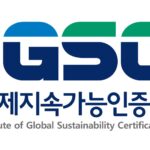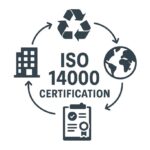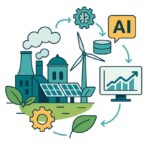Background
Natural atmospheric amounts of carbon dioxide, a colorless gas, range from 0 to 5%. It comprises three atoms: a linear molecule with no net dipole moment is formed by two oxygen atoms bound to one carbon atom. It is formulated in these means: (1) aerobic creatures like people and animals mainly produce it during respiration. Still, it may also be generated during combustion or the microbial breakdown of organic waste (2), by burning fossil fuels, including coal, oil, gasoline, and natural gas produces the bulk of anthropogenic emissions, and (3) depending on the intended product(s), CO2 may be used directly by converting it into chemicals through various catalytic routes besides being used in industrial processes like manufacturing cement or soda (s).
Carbon Dioxide Utilization Methods
It is possible to convert carbon dioxide into valuable chemical compounds using various techniques. Thermocatalytic conversion involving high temperatures; microbial conversion using engineered bacteria strains; direct electrochemical reduction using renewable energy sources; photocatalytic reduction using sunlight; mitochondria-mediated enzymatic conversions using enzymes extracted from living cells; synthetic organic chemistry using organometallic reagents with base metals such as catalysts copper or iron; and enzyme-assisted reactions using biocatalysts are a few of these. Each technique has unique benefits according to the intended product categories, production rate, energy consumption, etc.
Applying electricity directly to CO2 molecules causes them to become formate ions, which may interact with other molecules to generate valuable compounds like methanol and ethanol. This process is known as direct electrochemical conversion. This approach eliminates any greenhouse gas emissions related to its use by using renewable energy sources like wind and solar power instead of conventional fossil fuels, making it an appealing choice, given the current global climate change concerns. And this method is more affordable than other methods now available because of its near 100% utilization rates and low need for catalyst materials. However, some issues must still be resolved before the option can be considered commercially viable due to slow reaction speeds when compared to photocatalytic techniques and limited scalability problems related to reactor size requirements to achieve large-scale production levels as required by industry standards today.
Photocatalytic Reduction: Using light energy and catalysts like titanium oxide nanocrystals doped with various transition metal oxides, such as silver, cobalt, zinc oxide, etc., photocatalytic reduction converts CO2 molecules into either formate ions, if applied at a cathodic potential, or hydroxyl radicals, if applied at an anodic potential. Both of these products have a wide range of uses in various industries, ranging from solvent to and since this method only needs a light source rather than traditional thermal heating, it is an appealing option for performing photochemical syntheses in settings where it would not be appropriate otherwise, such as small batch production or laboratories where space and resources are limited, respectively. This method also offers flexibility unmatched.
Engineering certain bacterial strains to directly absorb dissolved gases from the environment, such as air, and transform them into valuable metabolites, such as fatty acids, is known as “microbial conversion.” With no additional external substrates, this method outperforms the others listed here in terms of costs because no additional reactants need to be purchased; instead, specialized cultures can be grown inexpensively on one’s property and used within the context effectively. And thanks to improvements in genetic manipulation technologies, even complex multi-step reactions can now produce target compounds at desired levels quickly and accurately, ensuring that quality control operations run without interruption for the foreseeable future for subsequent projects. Researchers are increasingly using genetic manipulation technologies to create new drugs and treatments. To keep ahead of the competition and maintain a competitive advantage in scientific development breakthroughs, the healthcare sector’s fast-growing worldwide market needs an ever-increasing quantity of research.
Thermocatalytic Conversion: Thermocatalysis is the application of heat to a mixture that contains both hydrogen and carbon monoxide to produce liquid hydrocarbons similar to petroleum fractions but much purer in quality than standard crude oil obtained from fossil fuel extraction sites today. Making it possible to access valuable end products that the refinery sector would find difficult to obtain elsewhere. And polymer synthesis is enabled through thermochemistry—Polyols, Plastics, rubber, foam, adhesives, sealants, glue, and coatings. Textiles, fibers, and composite materials have various uses in various industries, including cosmetics, packaging, food processing, automotive engineering, building construction, agriculture, and aerospace. This is why they are quickly gaining popularity and are the leader in the technology industry on a global scale. Mitochondrial-mediated enzymatic conversions entail extracting enzymes from living cells, specifically mitochondria, and transferring them to another medium where they transform reactive intermediates, ultimately forming a final product designated point predetermined pathway result from the generation of valuable intermediate metabolites multiple commensal compounds. Lactic acid, acetoin, glycerol, and alcohol Acetic succinic piperonylic succinic malic tartaric fumaric glutaraldehyde, 2-hydroxybenzoate, phenoxyacetic acid, and 2-methylphenoxyethanol are just a few compounds that can be extracted with even better accuracy and purity at reduced prices as an added value.
However, in contrast to the direct electrochemistry method, mitochondrial conversions have slower kinetics, which means it takes longer for the cycle to complete before reaching the endpoint. This might reduce actual throughput capacity. In certain circumstances, speedier response times are necessary. Ensure the final product is delivered by the expected date and on the schedule promised to the clients and customers. Before beginning the project, this is a crucial factor to avoid any disappointments that could cause delays that could cost the organization money or cause long-term harm to its reputation, brand awareness, and market share.
Organic Synthetic Chemistry: The creation of organometallic reagents made up of transition metals, ligands, and support structures to produce favorable stereoselectivity is known as synthetic organic chemistry or “Organometallics.” Compared to other course subject parameters, each case basis must be considered to adequately identify the best optimal conditions operating under the context, ensuring maximum efficiency. Chemo regioselectivity during transformations allows selective functional group formations at specific positions of molecules to be easily accomplished in a short while. Minimizing waste in labor, materials, and resources while giving safety personnel equipment high priority. Remember, at every stage of the project execution phase, including the delivery of clients in the most successful manner feasible, despite obstacles faced and unforeseen circumstances.
Examples of Chemical Synthesis from Carbon Dioxide (CO2)
- Methanol synthesis: The Monsanto method, which includes the interaction of carbon dioxide with hydrogen gas in the presence of a copper-zinc catalyst, may create methanol from carbon dioxide. The production of methanol from carbon dioxide may be accomplished by mixing it with hydrogen over a suitable catalyst at high temperatures and pressures (for example, 400–430 °C and 10–20 bar). The term “methanation” also applies to this process.
- Production of formic acid: Using an electrochemical cell and a palladium-copper catalyst, formic acid may be produced from carbon dioxide and hydrogen.
- Conversion to oxalate salts: Through chemical processes involving boron and aluminum compounds like borax or alumina hydrate and other acids, including hydrochloric acid or sulfuric acid, carbon dioxide may also be transformed into oxalate salts.
- Polycarbonates are made by combining phosgene with dihydric alcohols like ethylene glycol in the presence of catalysts like tin tetrachloride or zinc chloride. This causes polymerization reactions that result in polymers primarily made of carbon dioxide molecules joined by oxygen atoms (i.e., polycarbonates).
- Carbonic Acid Synthesis: In a catalyst such as sulfuric acid or phosphoric acid, carbon dioxide, and water combine to form carbonic acid. The result may make compounds like urea and formats.
- Synthesis of Dimethyl Ether: Dimethyl ether (DME) is another significant compound that can be produced from carbon dioxide by using catalysts for the synthesis of methanol and a reforming agent, such as a mixture of CO2/H2O or CO/H2, at temperatures between 350 and 400 °C and pressures of up to 20 bar for the conversion of syngas into DME.
- Polycarbonate Production: Because of their strength, durability, transparency, heat resistance, and electrical insulating qualities, polycarbonates are often employed in industrial applications. They are commonly made by transesterifying bisphenol with phosgene, created when carbon dioxide reacts with chlorine gas or a hydrochloric acid solution at a high temperature (200–300 °C).
- Dimethyl carbonate (DMC) synthesis is a process used to produce the chemical compound dimethyl carbonate. It involves reacting methanol with phosgene or carbon dioxide in the presence of a base catalyst such as potassium hydroxide or sodium hydroxide. The reaction produces dimethyl carbonate and hydrogen chloride, which is then removed from the mixture via distillation. Dimethyl carbonate can be used as an alternative to ethylene glycol in automotive and aircraft antifreeze formulations, as well as for numerous other applications including solvents, plasticizers, propellants, and fuels.
How DEISO Can Help with your Chemical Synthesis from Carbon Dioxide project?
- DEISO offers a wide range of professional Life Cycle Assessment (LCA) services to evaluate the environmental impact associated with chemical synthesis from carbon dioxide. Find them here.
- We also offer Life Cycle Assessment (LCA) consulting services of per hour rate.
- DESIO also offers chemical process simulation of chemical synthesis from carbon dioxide using Aspen Plus. Learn more here.
- We also offer Life Cycle Assessment training for LCA, its software, and data.
- We also offer training for Aspen Plus.










